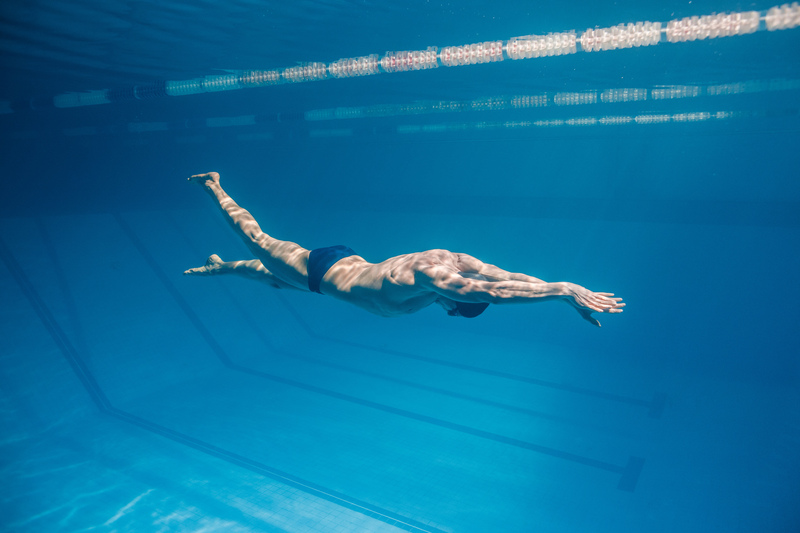Taking Care of Your Health in Today’s World
Many people of modern society are forced to spend a long time sitting at a computer and moving around in cars. Low mobility and environmental degradation, coupled with malnutrition and bad habits, can cause serious harm to health. Often people experience heart attacks, strokes, heart attacks and suffer from back problems caused by an inactive way of living. Most of these health problems can be solved by doing recreational swimming, which will not require you to spend much money or effort.

Let’s find out what health advantages swimming has and why it is so popular among people leading a healthy lifestyle and get acquainted with the history of the development of this sport.
The History of the Emergence and Evolution of Swimming
Historians and archaeologists claim this sport has been known for a couple of millennia BC. The initial swimming competitions were held in prehistoric Egypt and Greece and were part of the compulsory physical health teaching of children. The routine of that time are alike to up-to-date crawl and breaststroke styles.
The first official competitions of our era were organized in 1515 in Venice. For many years, swimming training and tournaments were held in natural reservoirs, but in the 19th century, the massive construction of special pools started, which led to rapid growth in the popularity of this sport. Thus, already in 1869, the first official Association of Amateur Sports Swimmers appeared in England. Following England, similar groups appeared in Germany, Sweden, the Netherlands, the USA, Italy, and Austria.
In 1908, FINA developed the rules for the Olympic contests. Since then, a record of records associated with the success of international swimmers has been kept.
Types and Techniques of Swimming
Many swimmers swim in the so-called freestyle, without paying special attention to style. Such sports will not be effective, as they do not provide the necessary uniform load on the body. Also, the choice of freestyle swimming is often associated with injuries.
Let’s take a look at the most widespread styles that you can use while training in the pool:
Breaststroke is the most popular type, which involves synchronous movements of the arms and legs in the same plane. The basic principles and rules of this style were formulated by Nicholas Winman in 1538. This style is quite slow compared to others – the world record for a 50m pool is 56.88 seconds. Also, the old style is the most difficult to perform and needs high concentration from the competitor. Its main advantage is the positive effect on the cardiovascular system, spine, and synchronization of maneuvers through rhythmic strokes that involve the thews of the back, legs, arms, and abs.
Overarm is a type of moving in the pool on the side, which was developed by English athletes. When performing this style, the athlete is on his side and performs deep and wide movements with his arms, as in swimming and crawling. This type has become widespread among rescuers and the military of different countries, as it allows you to swim with a load or drag another person on yourself. Training in this style allows you to further improve the plasticity and balance of the athlete.
Trudgen is an old-fashioned style that was first used by the Englishman John Arthur Trudgen in 1873. This type quickly gained popularity and surpassed breaststroke and overarm due to its greater dynamism and speed of movement in the pool. It was used in the official contests until 1920.
Crawl is one of the most favored styles. It was first demonstrated at competitions by Richmond Cavill at the beginning of the 20th century, although it was known in ancient Greece. The main feature of this style is the alternating work of the arms, which provides continuous dynamic acceleration and allows one part of the body to rest when another makes an effort. In the late 1920s, it finally supplanted other types of swimming. Using this kind will allow you to harmoniously develop the chest and shoulder girdle and train your back and cardiovascular system well.
Swimming on the back is a separate Olympic sport that involves the competitor in an inverted position in the pool, face up. In moving on the back, there are also varieties such as front crawl and breaststroke. Training in this style will help to better develop the shoulder girdle and prevent the back from excessive stress in case of injuries and chronic diseases.
The butterfly is the most complicated moneuvre. It is a more complex version of the breaststroke, where in addition to synchronous movements of the hands, the swimmer must make a wave-like movement with the whole body, pushing off the pool with his feet. This technique is very hard to learn but allows you to perform impressive speed in the pool. Training in this style will help develop coordination, strengthen the health, the shoulder girdle, and the legs.
Pros and cons of swimming
Many people who go in for swimming pool note a significant improvement in the well-being and tone of the whole organism. Let’s weigh the pros and cons of doing this sport.
Pros:
- Strengthens the health and cardiovascular system
- Maintains muscle tone throughout the body
- Helps strengthen your health back and posture
- Increases stamina
- Increases lung capacity
- Saturates the blood with oxygen
- Does not require long and exhausting workouts
- Minimum risk of injury
- The ability to engage in open water in the absence of a special pool
Cons:
- Lack of specialized pools in small towns
- Special medical documents required
- Requires the necessary equipment in the form of trunks, cap, goggles and a nose clip
- Some strokes are hard to learn
Weigh the Pros and Cons and Discover the Benefits of Swimming!
As you can see, the number of pluses is definitely greater and the disadvantages of swimming are not so difficult to solve. If you live in a large city, then you will surely easily find special pools where professionals in teaching work. One of these specialized centers operates in Chicago – Swim Smooth Chicago. such institutions are not aimed at training Olympic athletes, but at teaching, adults to swim, to maintain their health, and prevent strokes and other health problems.
Make a choice in favor of swimming and ensure your longevity and health!

